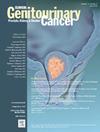Active Surveillance in Intermediate-Risk Prostate Cancer: A Contemporary Synthesis of Evidence
IF 2.7
3区 医学
Q3 ONCOLOGY
引用次数: 0
Abstract
Active surveillance (AS) is a widely accepted strategy for low-risk prostate cancer, but its application to intermediate-risk disease remains controversial. Given the potential to reduce overtreatment without compromising survival, this review evaluates the safety and clinical outcomes of AS in intermediate-risk prostate cancer (IR-PCa), with a focus on favorable intermediate-risk (FIR) subsets. The objective is to synthesize current evidence on AS utilization, selection criteria, oncologic outcomes, and predictors of disease progression.We conducted a narrative review of 85 studies published between 2009 and 2025 identified through PubMed, Embase, and Web of Science. Search terms included “AS,” “intermediate-risk prostate cancer,” “Gleason 3 + 4,” and “watchful waiting.” Eligible studies included prospective and retrospective cohorts, registry-based analyses, and comparative observational studies evaluating AS in IR-PCa. Data were extracted regarding inclusion criteria, follow-up protocols, progression rates, survival outcomes, and use of imaging and genomic tools for risk stratification. AS is increasingly used in FIR patients with low-volume Gleason 3 + 4 disease, low PSA density, and favorable imaging/genomic profiles. In these patients, 5-10 year metastasis-free survival exceeds 95%. However, AS in unfavorable IR disease is associated with higher risks of disease progression and prostate cancer–specific mortality. Limitations include heterogeneity in AS protocols, lack of randomized trials, and variable definitions of FIR. AS is a viable option for well-selected FIR-PCa patients. Incorporating PSA density, mpMRI, and genomic testing enhances risk stratification. Clinical guidelines should support tailored AS approaches with standardized follow-up and timely intervention triggers.
主动监测中危前列腺癌:当代综合证据
主动监测(AS)是一种被广泛接受的低危前列腺癌治疗策略,但其在中危前列腺癌中的应用仍存在争议。鉴于在不影响生存的情况下减少过度治疗的潜力,本综述评估了AS治疗中危前列腺癌(IR-PCa)的安全性和临床结果,重点关注有利的中危(FIR)亚群。目的是综合目前关于AS使用、选择标准、肿瘤预后和疾病进展预测因素的证据。我们通过PubMed、Embase和Web of Science对2009年至2025年间发表的85项研究进行了叙述性回顾。搜索词包括“AS”、“中等风险前列腺癌”、“Gleason 3 + 4”和“观察等待”。符合条件的研究包括前瞻性和回顾性队列,基于登记的分析,以及评估IR-PCa中AS的比较观察性研究。提取有关纳入标准、随访方案、进展率、生存结果以及使用成像和基因组工具进行风险分层的数据。AS越来越多地用于低体积Gleason 3 + 4疾病、低PSA密度和有利的影像学/基因组谱的FIR患者。在这些患者中,5-10年无转移生存率超过95%。然而,不利IR疾病的AS与疾病进展和前列腺癌特异性死亡率的高风险相关。局限性包括AS协议的异质性、缺乏随机试验和FIR的可变定义。对于精心挑选的FIR-PCa患者,AS是一种可行的选择。结合PSA密度,mpMRI和基因组检测增强了风险分层。临床指南应支持量身定制的AS方法,采用标准化的随访和及时的干预触发器。
本文章由计算机程序翻译,如有差异,请以英文原文为准。
求助全文
约1分钟内获得全文
求助全文
来源期刊

Clinical genitourinary cancer
医学-泌尿学与肾脏学
CiteScore
5.20
自引率
6.20%
发文量
201
审稿时长
54 days
期刊介绍:
Clinical Genitourinary Cancer is a peer-reviewed journal that publishes original articles describing various aspects of clinical and translational research in genitourinary cancers. Clinical Genitourinary Cancer is devoted to articles on detection, diagnosis, prevention, and treatment of genitourinary cancers. The main emphasis is on recent scientific developments in all areas related to genitourinary malignancies. Specific areas of interest include clinical research and mechanistic approaches; drug sensitivity and resistance; gene and antisense therapy; pathology, markers, and prognostic indicators; chemoprevention strategies; multimodality therapy; and integration of various approaches.
 求助内容:
求助内容: 应助结果提醒方式:
应助结果提醒方式:


